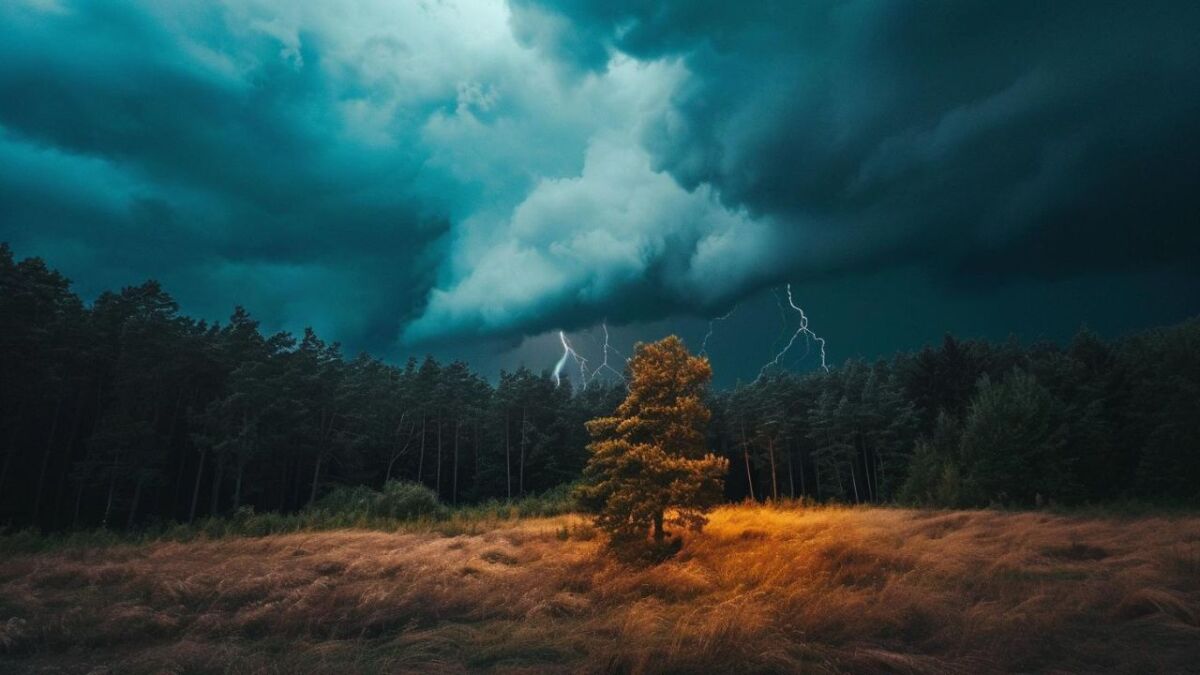
weather
Noun
Meaning
Weather refers to the atmospheric conditions and elements that occur in a specific location at a given time. In the context of survival, bushcraft, wilderness, camping, and hiking, understanding and being prepared for the weather is crucial. It affects our ability to stay safe, find shelter, start fires, and navigate through the wilderness. Knowing how to interpret weather patterns, such as changes in temperature, wind direction, cloud formations, and precipitation, can help us make informed decisions and adapt our strategies accordingly. Weather plays a significant role in outdoor activities, and being aware of its impact is essential for a successful and safe adventure.

Examples
„The weather can be unpredictable in the wilderness, so it's important to always be prepared.“
„I always check the weather forecast before heading out on a camping trip.“
„The weather conditions can greatly affect your survival skills, so it's crucial to adapt accordingly.“
„During a heavy rainstorm, it's essential to find shelter and protect yourself from the elements.“
„Extreme weather conditions, such as blizzards or heatwaves, can pose serious risks to your safety.“
Origin
The word "weather" originates from the Old English word "weder," which means "air, sky, weather." It can be traced back to the Proto-Germanic word "wedrą" and the Proto-Indo-European root "weh₁dʰ-," meaning "to blow." The concept of weather has been a part of human language and culture since ancient times, as people have always been interested in understanding and predicting the atmospheric conditions.
Over the centuries, the word "weather" has evolved and expanded in its usage. It not only refers to the state of the atmosphere, including temperature, precipitation, wind, and cloud cover, but also encompasses the overall atmospheric conditions and their effects on the environment and human activities.
Today, "weather" is a commonly used term in everyday conversations, scientific research, and various fields such as meteorology, agriculture, aviation, and outdoor activities. It plays a crucial role in our daily lives, influencing our clothing choices, travel plans, and even our moods.
Synonyms
Climate, Conditions, Elements, Atmospheric conditions, Meteorological conditions, Climate conditions, Weather conditions, Weather patterns
Antonyms
Sunny, Clear, Calm, Pleasant, Mild, Warm, Dry, Stable
Relatives
Climate, Forecast, Temperature, Precipitation, Storm, Wind, Humidity, Conditions
Historical and cultural importance
The word "weather" has a significant historical and cultural relevance as it has always played a crucial role in human civilization. Throughout history, people have relied on their understanding of weather patterns to survive and thrive in their environments.
In ancient times, various civilizations developed their own methods to predict and interpret weather conditions. For example, the ancient Egyptians closely observed the movements of celestial bodies to forecast the annual flooding of the Nile River, which was essential for their agricultural practices.
In many cultures, weather has also been closely tied to religious beliefs and rituals. For instance, Native American tribes often performed rain dances to invoke rainfall during times of drought. Similarly, in Norse mythology, the weather was believed to be controlled by gods such as Thor, who was associated with thunderstorms.
Weather has also influenced the course of history in numerous ways. The outcome of battles, the success of explorations, and the fate of entire civilizations have been shaped by weather conditions. For example, the Spanish Armada's defeat in 1588 was partly attributed to the severe storms encountered during their attempted invasion of England.
Today, weather forecasting and monitoring have become highly advanced, thanks to technological advancements. Meteorologists use sophisticated instruments and computer models to predict weather patterns with increasing accuracy. This knowledge is crucial for various industries, including agriculture, aviation, and disaster management.
Understanding weather and its impact on our lives is not only a matter of survival but also a way to appreciate the intricate relationship between humans and the natural world.
More information about the term weather
Understanding Weather in the Wild
When venturing into the wilderness, one of the most important factors to consider is the weather. Understanding the weather conditions can make a significant difference in your survival and overall experience. In this guide, we will explore the basics of weather and how it affects your outdoor adventures.
The Importance of Weather Awareness
Weather can change rapidly in the wild, and being aware of these changes is crucial for your safety. Sudden storms, extreme temperatures, and other weather phenomena can pose serious risks if you are unprepared. By staying informed about the weather forecast and learning to read the signs in nature, you can make informed decisions and adapt your plans accordingly.
Weather Patterns and Forecasting
Weather patterns are the recurring atmospheric conditions that can be observed over a specific area. Understanding these patterns can help you predict the weather and plan your activities accordingly. Some common weather patterns include high and low-pressure systems, fronts, and jet streams.
Weather forecasting is the process of predicting future weather conditions based on current observations and historical data. Meteorologists use various tools and techniques to analyze weather patterns and make accurate forecasts. As an outdoor enthusiast, it is essential to stay updated with the latest weather forecasts before heading out into the wild.
Reading the Signs in Nature
While weather forecasts provide valuable information, it is also essential to learn how to read the signs in nature. Nature often gives us subtle hints about upcoming weather changes. For example, a sudden drop in temperature, changes in wind direction, or the behavior of animals can indicate an approaching storm.
Cloud formations are another valuable indicator of weather conditions. Different types of clouds, such as cumulus, stratus, and cirrus, can provide insights into the current and future weather. Learning to identify these cloud formations can help you anticipate changes in weather patterns.
Preparing for Different Weather Conditions
Being prepared for various weather conditions is essential for any outdoor adventure. Whether you are facing scorching heat, freezing temperatures, heavy rain, or strong winds, having the right gear and knowledge can make all the difference.
Investing in high-quality outdoor clothing that is both waterproof and breathable is crucial for staying dry and comfortable in wet weather. Layering your clothing allows you to adjust your insulation levels based on the temperature. Additionally, carrying essential items such as a waterproof shelter, fire-starting tools, and extra food and water is vital for your safety.
Conclusion
Weather plays a significant role in any outdoor activity, and understanding its dynamics is essential for your safety and enjoyment. By staying informed about weather forecasts, learning to read the signs in nature, and being prepared for different weather conditions, you can embark on your wilderness adventures with confidence. Remember, nature can be unpredictable, so always prioritize safety and be ready to adapt your plans when necessary.
Back to overview

